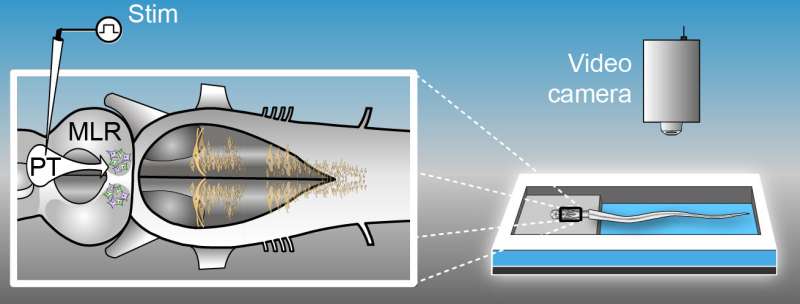Controlling movement like a dimmer switch

New research published in The Journal of Neuroscience identifies a motor pathway between the forebrain and brainstem that works like a dimmer switch to regulate swimming speed in the sea lamprey - a primitive, jawless fish with an eel-like body studied by neuroscientists as a model of the vertebrate nervous system. Dysfunction of this pathway, which is likely present in mammals potentially including humans, may contribute to the symptoms of movement disorders such as Parkinson's disease.
Using a variety of cellular and behavioral techniques, Réjean Dubuc , his postdoctoral fellow Dimitri Ryczko, and colleagues show that increasing stimulation of the posterior tuberculum (PT) of the lamprey forebrain gradually activates neurons in the mesencephalic locomotor region (MLR) of the brainstem, which in turn ramps up swimming frequency. They found that neurons in these regions use the neurotransmitters glutamate and dopamine in parallel to control the speed and frequency of movement, which could enable the animal to fine tune its approach and avoidant behaviors.
The MLR is found in all vertebrates in which it has been studied and the PT is similar to a region in mammals called the substantia nigra pars compacta, highlighting the relevance of this model organism for understanding how the nervous system controls movement.
More information: Journal of Neuroscience (2017). DOI: 10.1523/JNEUROSCI.1810-17.2017


















